The skyline of the second-most populous city in Belgium is dominated by one of the most stunning Gothic cathedrals in the world.
It’s the tallest church in the Benelux (Belgium, the Netherlands, and Luxembourg), and has a remarkable history that goes back to the 12th century.
Apart from the stunning Gothic architecture, you can also admire famous artworks inside the church that were painted by the most notable artist who ever lived and worked in Antwerp.
Let’s take a closer look at some of the most interesting facts about the Cathedral of Our Lady, one of the most amazing buildings in Antwerp.
1. It’s located just north of a large square in central Antwerp
It’s hard to miss the Cathedral of Our Lady in Antwerp because it’s by the tallest building in the city. It’s only one of two that could be classified as a skyscraper (the Antwerp Tower is just 100 meters tall).
It’s separated by a row of buildings from the Groenplaats, one of the largest urban spaces in Antwerp. The sculpture of Peter Paul Rubens has decorated this square since 1843.
Just one block to the northwest you can find the Grote Markt, the historical heart of the city that is flanked by the magnificent Antwerp City Hall.
This is a place to hang out with a large number of historical landmarks within walking distance of each other.
2. It replaced a former chapel and Romanesque church in this location
The history of the seat of the Diocese of Antwerp is quite remarkable because it was originally founded as a chapel in the 12th century.
The popularity of the chapel became so great that it was replaced by a Romanesque building shortly after, the common architectural style in Europe during the Middle Ages.
This building features 3 naves which were about as wide as the central nave of the Gothic church we can admire today.

3. The first church in Antwerp was situated along the banks of the Scheldt River
Christianity came to Antwerp in the 7th century and these Christian missionaries established the first parish church in the city.
This was remarkably not in the location of the Cathedral of Our Lady as this was located where you can find the modern-day “Sint Michielsstraat.” This is just a few hundred meters southwest of the cathedral.
Dedicated to Saint Michael, the church became an abbey in 1124 known as “St. Michael’s Abbey.” This gradually expanded and became the largest religious structure in Antwerp.
The entire complex was demolished in the aftermath of the French Revolution in the late 18th century and there was no trace of the abbey anymore by 1831.
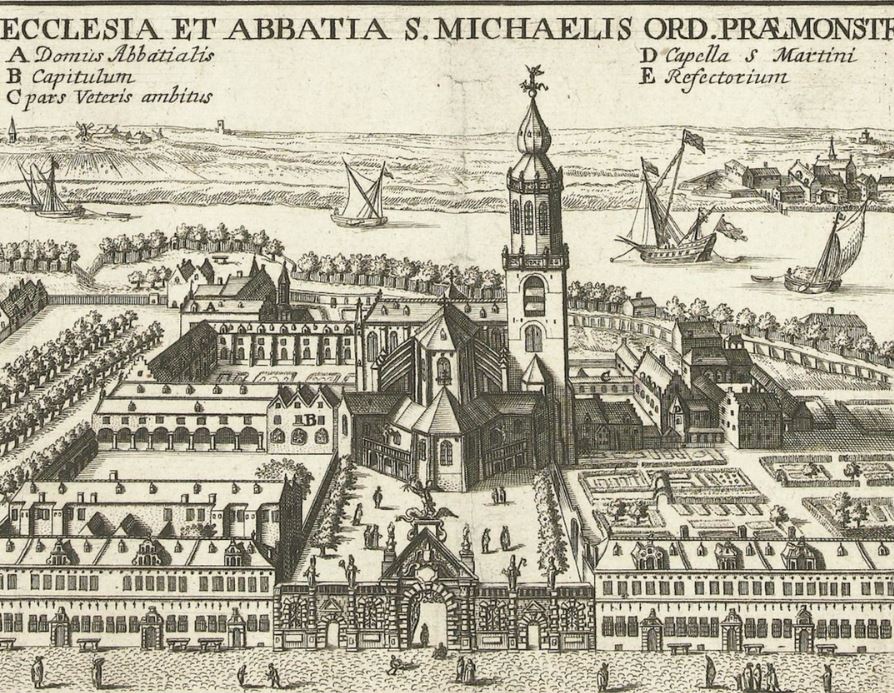
4. The Gothic cathedral was constructed between 1352 and 1521
The Romanesque church became outdated in the 14th century and it was decided to build a completely new church.
This monumental building was to become the largest Gothic cathedral in the Low Countries and the first stone was laid in 1352, a period when the economic heart of the region was shifting from Bruges to Antwerp.
The construction of the building permanently stopped in 1521, almost 170 years after it was started.
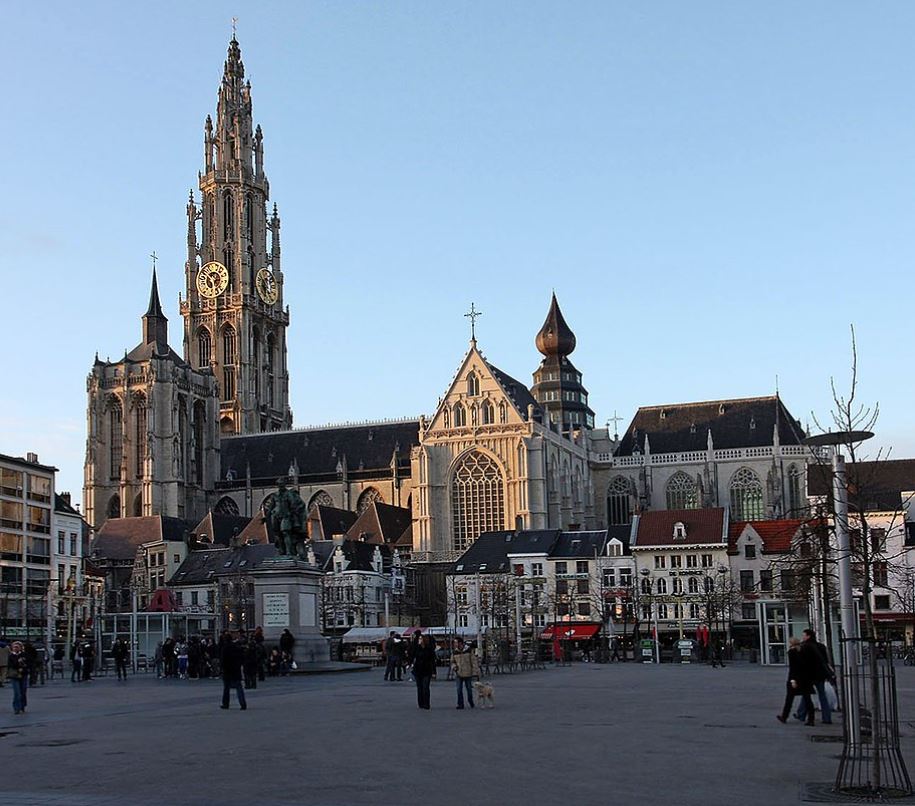
5. It was designed with two towers but the south tower was never completed
Did you notice that I said that the building of the cathedral stopped? That’s because essentially, the cathedral was never completed.
The main reason was a fire that occurred in early October 1533 which raged for 3 days. The building was saved but all efforts were placed on restoring it instead of completing the second tower.
As you can see, the south tower was already started and the first 3 levels look exactly the same as the north tower.
The idea was to build two monumental twin towers but this unfortunately never happened. The result would have been quite amazing, don’t you think?
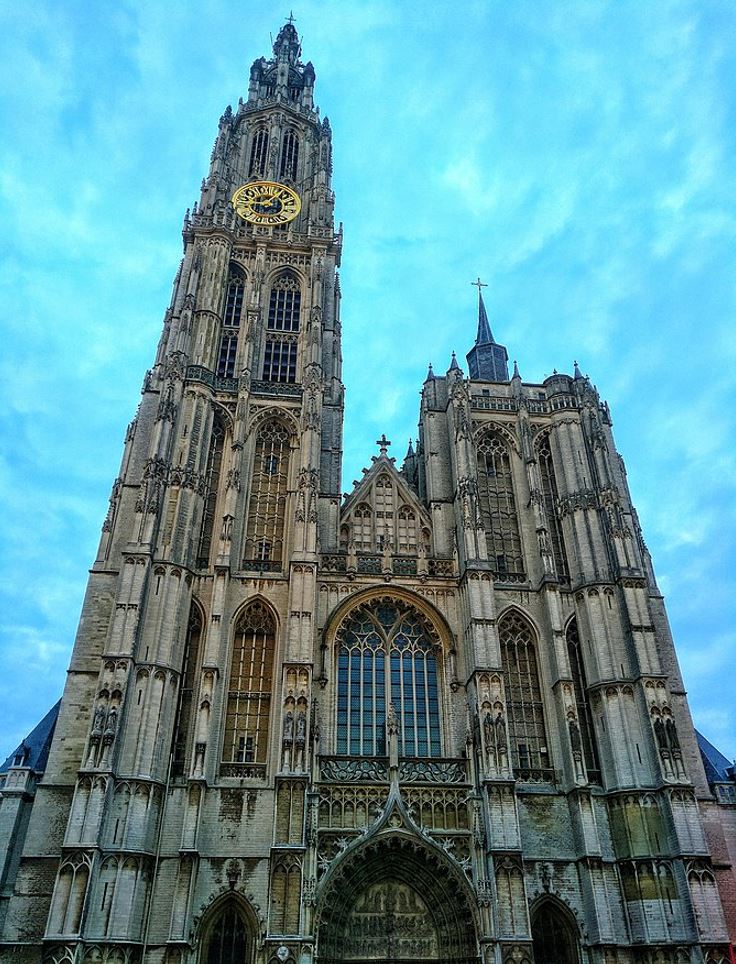
6. How tall is the Cathedral of Our Lady in Antwerp?
I already mentioned that it’s the tallest building in Antwerp, and that’s because the spire of the amazing tower of this Gothic cathedral stands 123 meters (404 feet) tall.
Here are some more amazing statistics about the Cathedral of Our Lady in Antwerp:
- Length: 120 meters (390 feet)
- Width: 75 meters (246 feet)
- Nave Width: 53.5 meters (176 feet)
- Interior height: 28 meters (92 feet)
- Floor area: 8,000 square meters (86,000 square feet)
- South Tower height: 65.3 meters (214 feet)

7. The interior was seriously damaged during the 16th-century Beeldenstorm
The start of the Eighty Years’ War in the Habsburg Netherlands was marked by a devastating event known as the “Beeldenstorm.”
The Protestants engaged in Iconoclasm and destroyed just about everything inside the church, including countless valuable artworks that were held there.
The end of the madness came in 1585 after the Fall of Antwerp, the result of an extended siege by Spanish forces which resulted in the restoration of Roman Catholic rule.
The cathedral suffered a similar fate during the French Revolution but the interior of the church was eventually restored to its former glory.
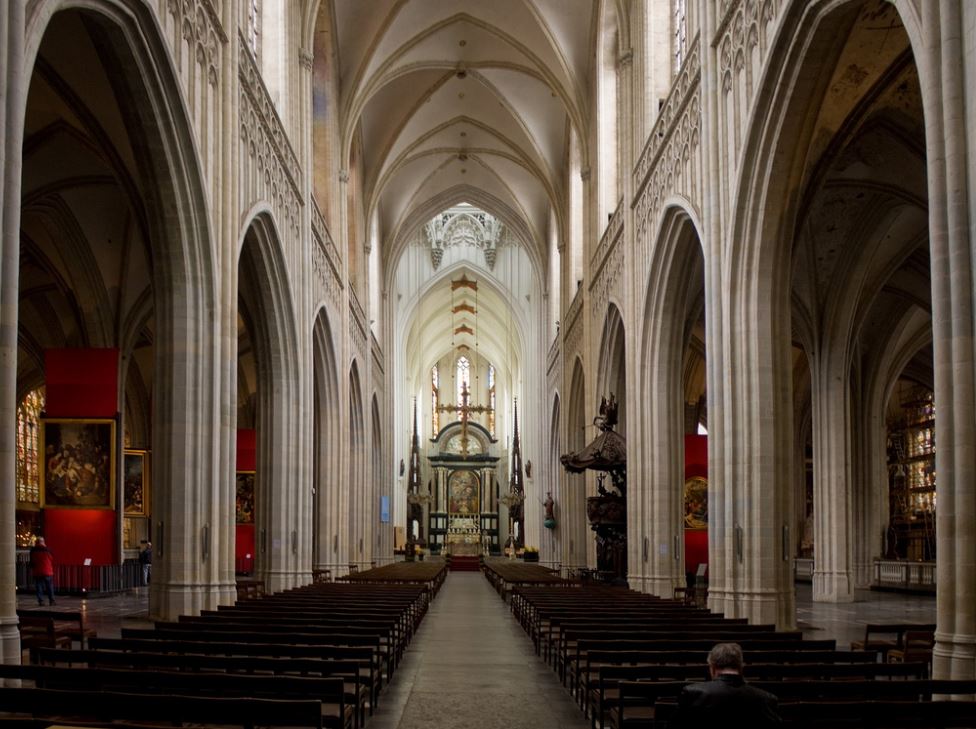
8. The cathedral is home to 3 monumental works of art by Peter Paul Rubens
The interior of the cathedral is pretty nice and features a large number of stained glass windows, including some exceptional ones that were added in the 19th century.
The most notable artworks inside the church are 3 paintings by Peter Paul Rubens titled:
- The Raising of the Cross
- Assumption of the Virgin Mary
- The Descent from the Cross
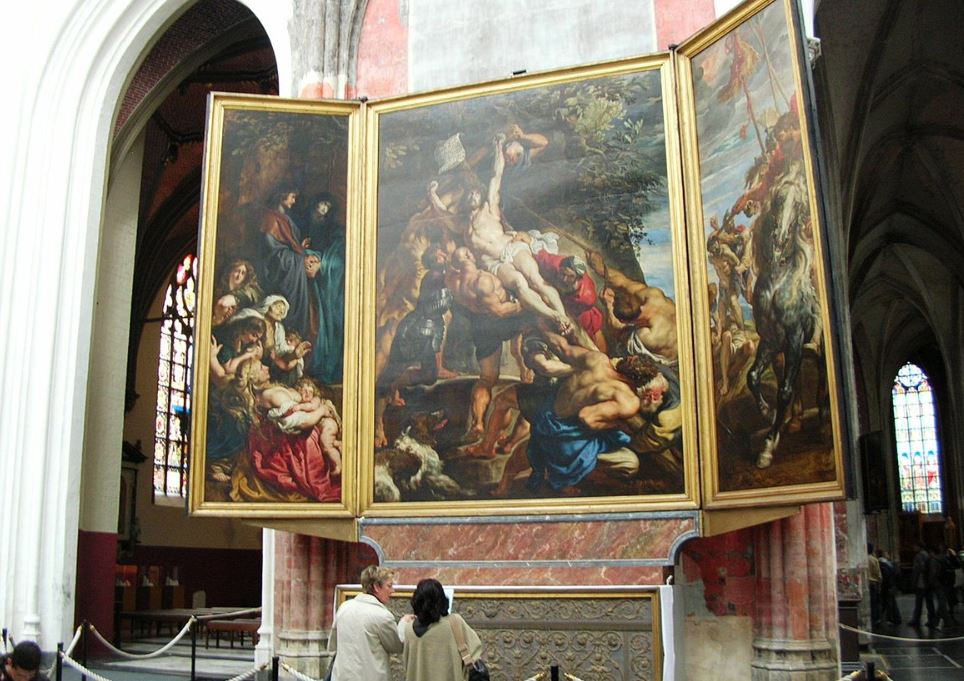
These masterpieces are certainly reason enough to enter the cathedral as they are considered to be some of Rubens’ ultimate masterpieces.
If you want to check to where the painter lived and worked in Antwerp, you can visit the Rubenshuis, his private residence, and studio in the city.


